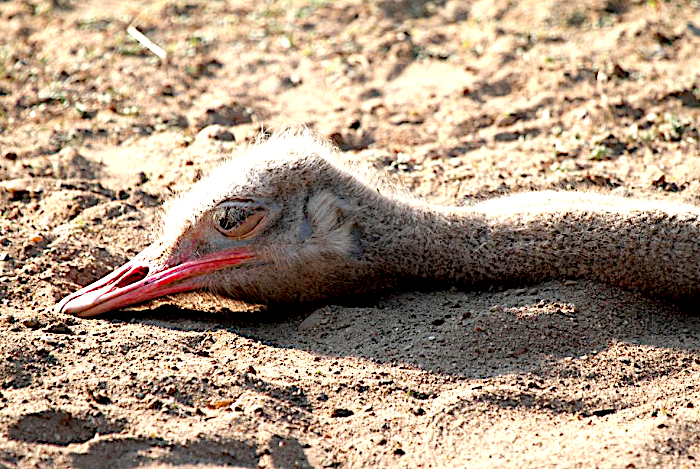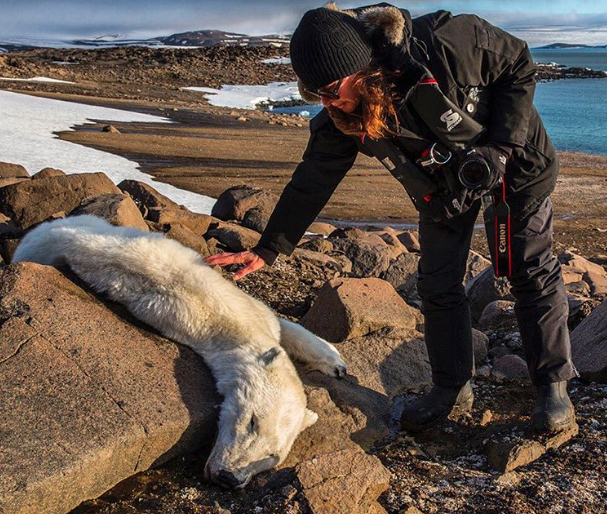
LIFE ON EARTN IS DYING
Robert J. Burrows

y Robert J. Burrowes – On the day that you read this article, 200 species of life on Earth (plants, birds, animals, fish, amphibians, insects, reptiles) will cease to exist. Tomorrow, another 200 species will vanish forever.
The human onslaught to destroy life on Earth is unprecedented in Earth’s history. Planet Earth is now experiencing its sixth mass extinction event and Homo sapiens sapiens is the cause. Moreover, this mass extinction event is accelerating and is so comprehensive in its impact that the piecemeal measures being taken by the United Nations, international agencies and governments constitute a tokenism that is breathtaking in the extreme.
And it is no longer the case that mainly ‘invisible’ species are vanishing: those insects, amphibians and small animals about which you had never even heard, assuming they have been identified and given a name by humans.
You and I are on the brink of driving to extinction some of the most iconic species alive today. For a photo gallery of threatened species, some of which are ‘critically endangered’, see ‘World’s wildlife being pushed to the edge by humans – in pictures’. https://www.theguardian.com/en
If you want to read more about some aspects of the extinction threat, you can do so in these recent reports: ‘World Wildlife Crime Report: Trafficking in protected species’ http://www.unodc.org/documents
And if you want to read just one aspect of what is happening in the world’s oceans, this recent UN report will give you something to ponder: ‘New UN report finds marine debris harming more than 800 species, costing countries millions’. http://www.un.org/apps/news/st
Last summer I traveled with a group of friends to Svalbard, Norway in search of polar bears. We went to my favorite spot where I have always been able to find bears roaming around on sea ice throughout the summer. On this occasion, however, we didn’t find any sea ice and we never found any bears alive. We did find two dead bears in this location and other groups found more dead bears. These bears were so skinny, they appeared to have died of starvation, as in the absence of sea ice, they were not able to hunt seals. In all of my years of growing up in the Arctic and later, working as a biologist, I had never found a dead polar bear. It is now becoming much more common. Kirsten Langenburger
Of course, some of what is happening is related to the ongoing climate catastrophe and there isn’t any good news on that front. See ‘What’s Happening in the Arctic is Astonishing’. http://blogs.agu.org/wildwilds
But not everything that is going badly wrong is well known either. Did you know that we are destroying the Earth’s soil? See ‘Only 60 Years of Farming Left If Soil Degradation Continues’. https://www.scientificamerican
And did you realise that even nitrogen is now a huge problem too? See ‘Scientists shine a spotlight on the overlooked menace of nitrogen’.http://www.unep.org/newscentre
Of course, military violence has devastating consequences on the Earth’s ecosystems too, destroying land, water and atmosphere (not to mention killing human beings) in the fight over resources. You will get no joy from the article ‘Iraq’s oil inferno – government inaction in the face of eco-terrorism’http://www.theecologist.org/Ne
While 2.5 billion human beings do not have enough to eat. See ‘One in three people suffers malnutrition at global cost of $3.5 trillion a year’.http://www.un.org/apps/news/st
As you read all this, you might say ‘Not me’! But you are wrong. You don’t have to be an impoverished African driven to killing elephants for their tusks so that you can survive yourself. You don’t have to be a farmer who is destroying the soil with synthetic poisons. You don’t have to be a soldier who kills and destroys or a person who works for a corporation that, one way to another, forces peasants off their land.
You just have to be an ‘ordinary’ person who pays your military taxes and consumes more than your share of world resources while participating without challenge in the global system of violence and exploitation managed by the global elite.
‘Why is this?’ you might ask.
This is because the primary driver of the human-induced mass extinction is not such things as some people hunting a particular lifeform to extinction, horrendous though this is. In fact, just two things drive most species over the edge: our systematic destruction of land habitat – forests, grasslands, wetlands, peatlands, mangroves… – in our endless effort to capture more of the Earth’s wild places for human use (whether it be residential, commercial, mining, farming or military) and our destruction of waterways and the ocean habitat by dumping into them radioactive contaminants, carbon dioxide, a multitude of poisons and chemical pollutants, and even plastic.
And do you know what drives this destruction of land and water habitats? Your demand for consumer products, all of which are produced by using land and water habitats, and the resources derived from them, often far from where you live. The most basic products, such as food and clothing, are produced on agricultural land, sometimes created by destroying rainforests, or taken from the ocean (where overfishing has savagely depleted global fish stocks). But in using these resources, we have ignored the needs of the land, oceans and the waterways for adequate regenerative inputs and recovery time.
We also participate, almost invariably without question or challenge, in the inequitable distribution of resources that compels some impoverished people to take desperate measures to survive through such means as farming marginal land or killing endangered wildlife.
So don’t sit back waiting for some miracle by the United Nations, international agencies or governments to solve this problem. It cannot happen for the simple reason that these organizations are all taking action within the existing paradigm that prioritizes corporate profit and military violence over human equity and ecological sustainability.
Despite any rhetoric to the contrary, they are encouraging overconsumption by industrialized populations and facilitating the inequitable distribution of income and wealth precisely because this benefits those who control these organizations, agencies and governments: the insane corporate elites who are devoid of the capacity to see any value beyond the ‘bottom line’. See ‘The Global Elite is Insane’. http://www.scoop.co.nz/stories
If you want action on the greatest challenge human beings have ever faced – to avert our own extinction by learning to live in harmony with our biosphere and equity with our fellow humans – then I encourage you to take personal responsibility.
If you do, you need to act. At the simplest level, you can make some difficult but valuable personal choices. Like becoming a vegan or vegetarian, buying/growing organic/biodynamic food, and resolutely refusing to use any form of poison or to drive a car or take an airline flight.
But if you want to take an integrated approach, the most powerful way you can do this is to systematically reduce your own personal consumption while increasing your self-reliance. Anita McKone and I have mapped out a fifteen-year strategy for doing this in ‘The Flame Tree Project to Save Life on Earth’.http://tinyurl.com/flametree You might also consider signing the online pledge of ‘The People’s Charter to Create a Nonviolent World’http://thepeoplesnonviolencech
One of the hidden tragedies of modern human existence is that we have been terrorized into believing that we are not personally responsible. See ‘The Delusion “I Am Not Responsible”‘. https://www.thenigerianvoice.c
And every time you decide to do nothing and to leave it to someone else, you demonstrate why no-one else should do anything either.
Extinction beckons. What will you do?
Robert J. Burrowes has a lifetime commitment to understanding and ending human violence. He has done extensive research since 1966 in an effort to understand why human beings are violent and has been a nonviolent activist since 1981. He is the author of ‘Why Violence?‘http://tinyurl.com/whyviolence His email address is [email protected] and his website is at http://robertjburrowes.wordpre
http://truepublica.org.uk/global/life-earth-dying/
Get Briefed, Get Weekly Intelligence Reports - Essential Weekend Reading - Safe Subscribe

